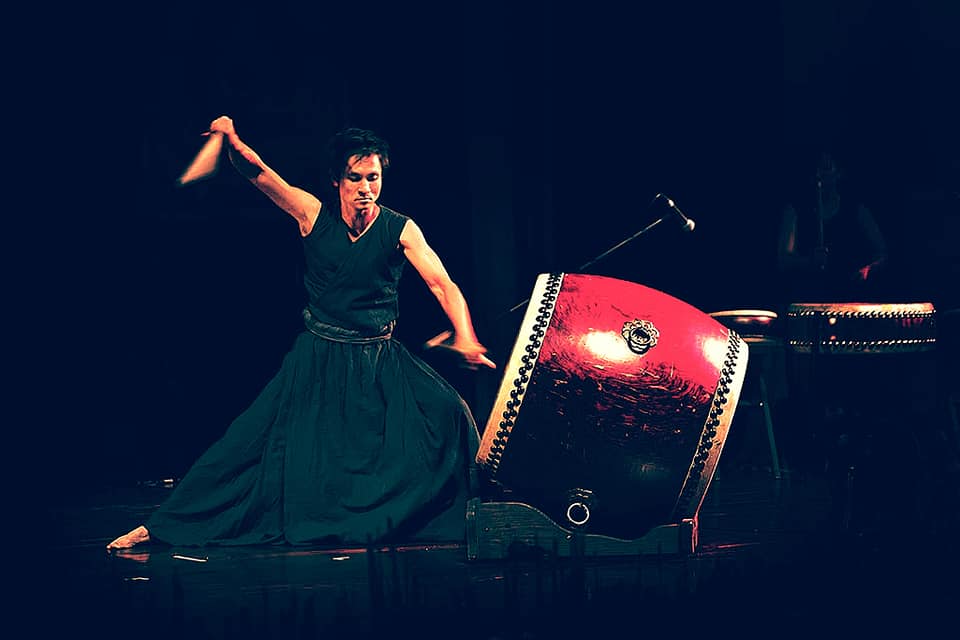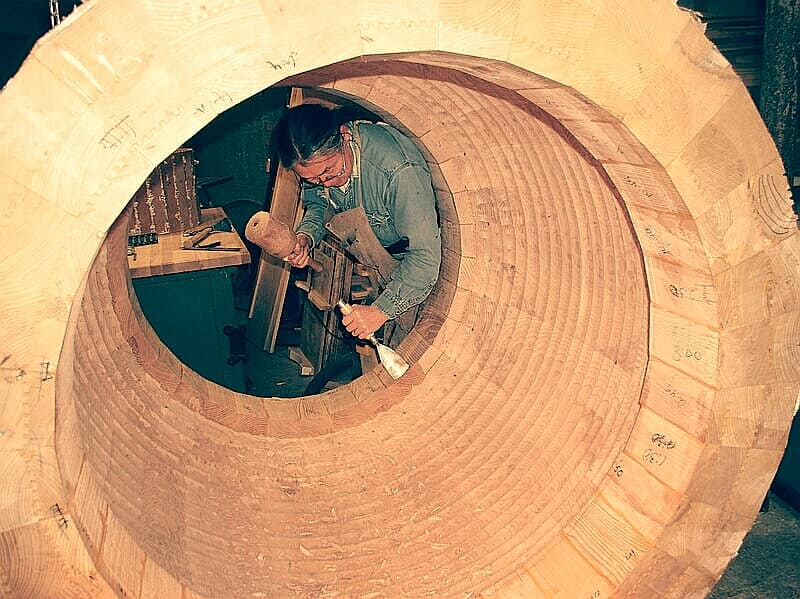Taiko construction has several stages, including making and shaping of the drum body (or shell), preparing the drum skin, and tuning the skin to the drumhead. Variations in the construction process often occur in the latter two parts of this process. Historically, byō-uchi-daiko were crafted from trunks of the Japanese zelkova tree that were dried out over years, using techniques to prevent splitting.
A master carpenter then carved out the rough shape of the drum body with a chisel; the texture of the wood after carving softened the tone of the drum. In contemporary times, taiko are carved out on a large lathe using wood staves or logs that can be shaped to fit drum bodies of various sizes. Drumheads can be left to air-dry over a period of years, but some companies use large, smoke-filled warehouses to hasten the drying process. After drying is complete, the inside of the drum is worked with a deep-grooved chisel and sanded. Lastly, handles are placed onto the drum. These are used to carry smaller drums and they serve an ornamental purpose for larger drums.
The skins or heads of taiko are generally made from cowhide from Holstein cows aged about three or four years. Skins also come from horses, and bull skin is preferred for larger drums.

Thinner skins are preferred for smaller taiko, and thicker skins are used for larger ones. On some drumheads, a patch of deer skin placed in the center serves as the target for many strokes during performance.
Before fitting it to the drum body the hair is removed from the hide by soaking it in a river or stream for about a month; winter months are preferred as colder temperatures better facilitate hair removal. To stretch the skin over the drum properly, one process requires the body to be held on a platform with several hydraulic jacks underneath it. The edges of the cowhide are secured to an apparatus below the jacks, and the jacks stretch the skin incrementally to precisely apply tension across the drumhead. Other forms of stretching use rope or cords with wooden dowels or an iron wheel to create appropriate tension. Small tension adjustments can be made during this process using small pieces of bamboo that twist around the ropes.
Particularly large drumheads are sometimes stretched by having several workers, clad in stockings, hop rhythmically atop it, forming a circle along the edge. After the skin has dried, tacks, called byō, are added to the appropriate drums to secure it; chū-daiko require about 300 of them for each side. After the body and skin have been finished, excess hide is cut off and the drum can be stained as needed.
Source: Facebook/aikido



